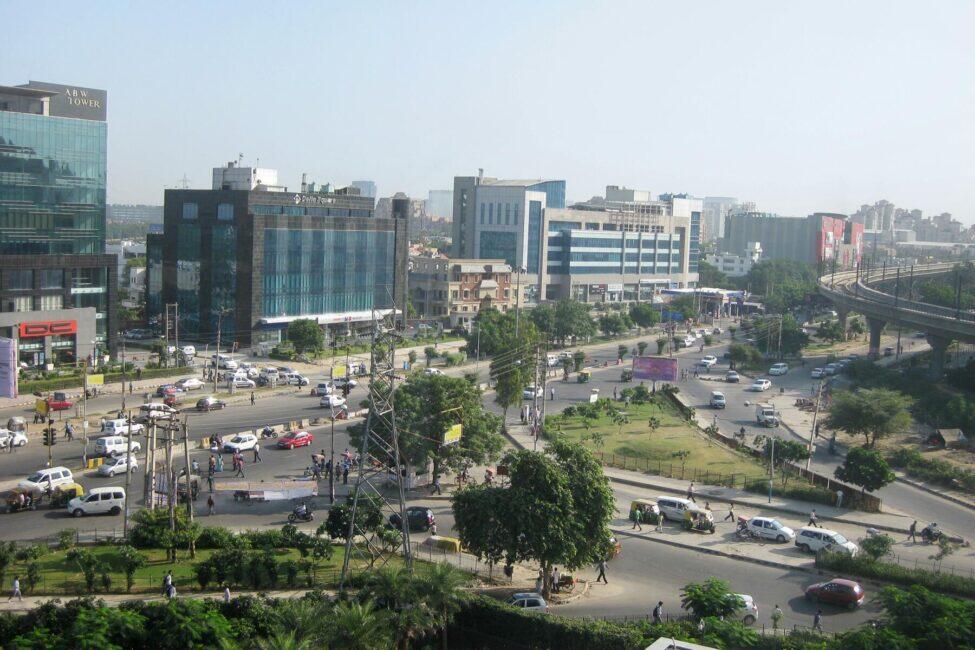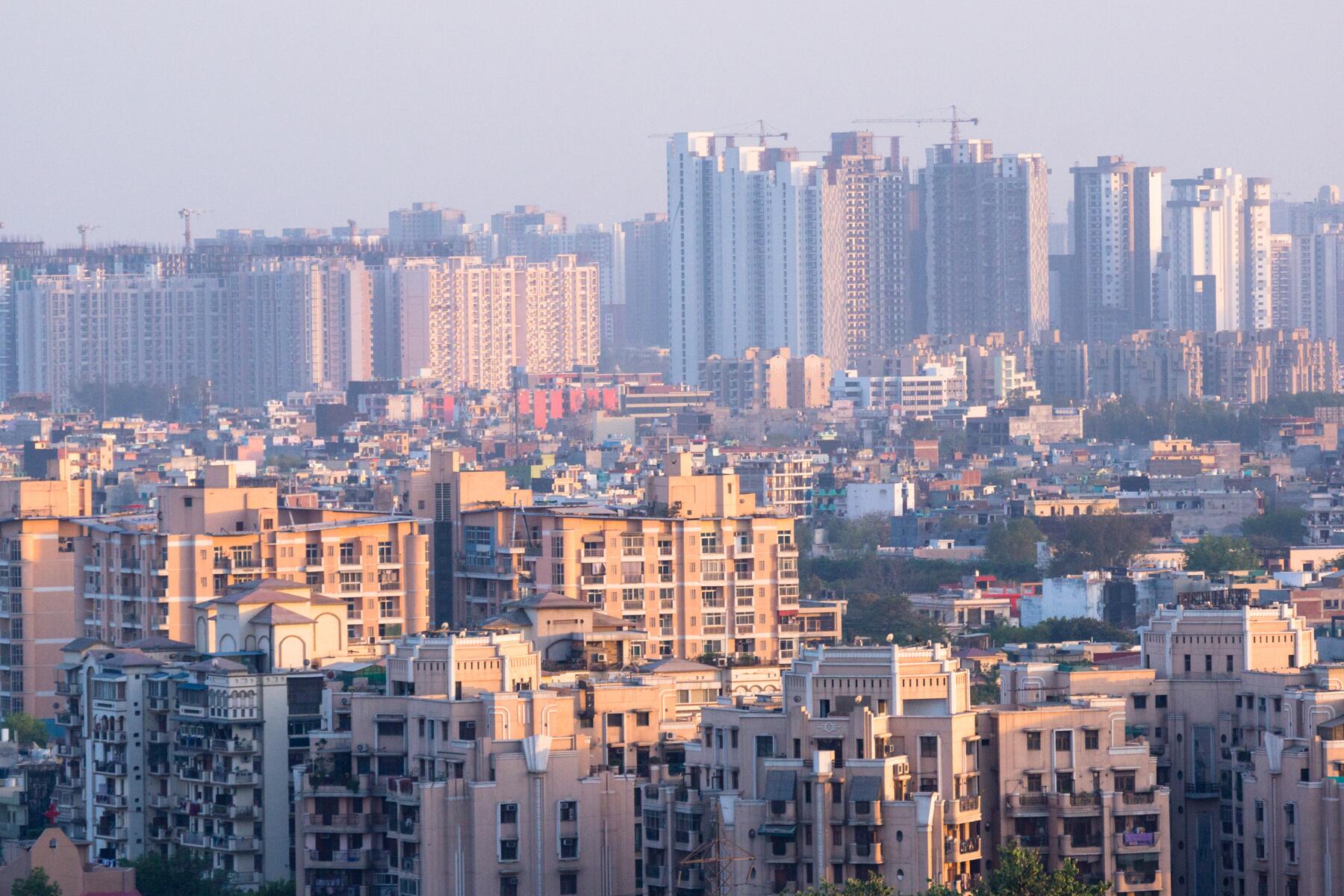Every breath I take while meditating in the morning punctures my relaxation with the thought, "What’s the Air Quality Index today?"
More than a decade ago, I was standing on the balcony of our home in Gurgaon, a city just outside of New Delhi. It was Diwali, and my dad and I were watching the fireworks light up the moonless sky.
“Why do you see the fireworks first and hear them later?” he asked.
“Because light travels faster than sound,” I replied.
As we heard more and more crackers, the air grew thicker. Soon, it was time to go inside and shut the doors.
Every year on Diwali, the doors remain shut, but smoke finds its way inside the rooms. Creeping inside like bad memories or cockroaches. Have you ever experienced smoke inside your house? It seems unnatural—your safe space being infiltrated, filling up with that omnipresent smell that hurts your eyes, scratches your throat.
But it’s not just fireworks and Diwali crackers that penetrate through our porous bubbles. Our world has become grayer, murkier, and smog has dimmed the sun. There’s a lingering smell of burnt tires in the air in the winter months, and we’re breathing in nitrates, sulfates, PM2.5, PM10, ammonia, and carbon. In this part of the world, waking up to poor air quality has become a quotidian reality (much like traffic in Los Angeles or slow walkers in New York).
Life in a Polluted City
Located 18 miles from India’s capital, Gurgaon (or Gurugram) is called the Millennium City, and it’s one of Delhi’s satellite cities—swanky, modern, and fast-paced. It’s also notoriously polluted. It claimed the first prize last year on this worrisome list of the world’s most polluted cities. On days the Air Quality Index (AQI) is under 200 (still unhealthy; the safe limit is 50), it’s a sigh of relief because it could be so much worse. After all, last year Delhi touched 1,200+ AQI. So you can imagine why my first thought every morning is, “Thank God, it’s not hazardous today!”
We have acclimatized to this new reality. Indoor plants, anti-pollution masks, and air purifiers have become part of our existence (at least for some of us who are privileged and have the means). In fact, there are memes on Twitter that say that people in North India are waiting for coronavirus to be over so we can bring out our N99 masks. For those looking for a combination of face masks that protects against both, there are plenty of listicles online. Humans are nothing if not adaptable, but this ingenuity doesn’t treat the underlying problem.

India is the second most polluted country in the world, and North Indians could lose eight years of life expectancy because of the air we breathe, one study has found. Unlike Paris, reducing road traffic alone won’t give us a respite. Our main problem, other than fossil fuels and fireworks, is crop burning in the states dependent on agriculture. Every year, farmers in the neighboring states of Uttar Pradesh, Haryana, and Punjab burn stubble just before harvesting new crops, in September and October. It’s a time-efficient method for them to get rid of the unwanted residue of straw and stubble in the fields, but the black smog it creates is a menace for the environment—not to mention that burning doesn’t help the health of the soil either.
Of course, state and central governments have formed committees. Of course, they claim to be encouraging farmers to look at other methods. Of course, there are initiatives like the odd-even scheme (odd and even-numbered vehicle plates drive on alternate days in Delhi) and Project Air Care (installation of air-purifying units in Gurgaon).
Has it helped? Not really.
Farm fires started early this year, so October was quite bad for Delhi-NCR residents and low winds meant that pollutants wouldn’t disperse from the air. Haryana has reported a 46% increase in stubble burning incidents. Even after the ban on firecrackers, they were heard in the city and the post-Diwali air quality in Gurgaon was the worst we’ve seen in five years.
Suffering through this during a pandemic means that there’s a double risk this year. Studies have revealed that people in polluted areas are more likely to be infected by the virus and suffer worse symptoms. So whether it’s India or the U.S., air pollution is deadlier than ever before.
The Problem Transcends Borders
I don’t know whether to find solace in the fact that we’re not the only ones dealing with it or lament that there are not many places that are still pristine.
According to the World Health Organization, nine out of 10 people breathe air that exceeds WHO limits. Sadly, air pollution kills seven million people in the world every year. Various studies have found that particulate matter that we inhale (PM2.5) can clog our lungs and enter our bloodstream. We’re at risk of diabetes, heart diseases, respiratory infections, kidney diseases, and mental health disorders—and more that we may not even be aware of. Those with respiratory issues, the elderly, children, and pregnant women are more vulnerable. In fact, kids can have developmental disorders and pollution can even affect fetal development.

When I left behind Delhi’s smog last year to celebrate New Year’s Eve in Sydney, I was bewildered when another smoky sky greeted me there. Australia is known for its beautiful blue blanket, but the country had been fighting bushfires for many weeks when I landed. Cities in Australia reached hazardous air quality levels and people were asked to stay indoors, just like India’s public health warnings. Canberra recorded the worst air quality on the planet on New Year’s Day. Hospitals witnessed more emergency visits due to breathing and respiratory issues. The long-term effects are still largely unknown, but the high levels of PM10 and PM2·5 are associated with many health problems.
In another corner of the world, California, Washington, and Oregon have faced their worst fire seasons this year. Over 3.2 million acres of land have burnt in California, and it’s still not over. The scene is nothing less than what Hollywood movies show as a post-apocalyptic world, with infernos burning under an angry, red-ember glow, and razed land and houses devoid of human population. Add to that toxic air, and you have a modern-day interpretation of Dante’s hell.
NPR reports that 36 counties in the three states experienced unhealthy air quality during the wildfire season and more than 17 million people inhabited places with “very unhealthy” to “hazardous” air quality. Fatigue, difficulty in breathing, coughing, sneezing, and light-headedness are short-term symptoms; exposure to this poisonous smoke can be detrimental to health in the long run.
In Brazil, 2020 has been the worst year for wildfires. The Amazon is burning and this should make us very, very scared. Rainforests are the lungs of the planet as they absorb carbon dioxide (a gas responsible for climate change). When these rainforests burn, they release CO2 into the atmosphere, adding to what we are releasing by burning coal and fuel. Not to mention that the rainforests are crucial for our ecosystem, and deforestation is putting all living beings in peril.
More than 17 million people live in places with “very unhealthy” to “hazardous” air quality. Fatigue, difficulty in breathing, coughing, sneezing, and light-headedness are short-term symptoms; exposure to this poisonous smoke can be detrimental to health in the long run.
But it’s not just fires—cities are living with smog even without an added crisis. Paris has been dealing with bad air for many years and has been working to improve the quality of life by taking various measures, like reducing road traffic and promoting lower NO2 emitting vehicles. In fact, in a landmark case last year, the court ruled in favor of the plaintiffs and said that the state hasn’t done enough to curb air pollution. The U.K. was also dragged to the courts by the European Union because it, too, failed to act against air pollution. Beijing has been working for two decades to reduce emissions and improve air quality, and though many successes have been noted, the PM2.5 levels are still higher than recommended.
There really is nowhere to hide.
When lockdowns happened in March, the world rejoiced that the air had cleared. But what a short-lived and unsustainable victory it was! It’s evident that we need to focus on climate change more than ever before—a mix of measures including reducing dependency on coal, international treaties for better technology, investment in renewable energy, and education and empowerment of local communities. The truth is that pollutants don’t care about boundaries—the smoke from Australia was seen in New Zealand, too. So let’s not kid ourselves that a few countries can take up the challenge. Whether we want to be or not, we are in this together.
It’s a sobering moment when I look up at the sky and can’t see the sun, or a clear blue sky with a fluff of white clouds. It’s possible that my lifetime will be spent in a haze, but as the youth today asks for a better tomorrow, maybe someday, another girl will feel a fresh breeze in her hair, lift her face to the glowing star, and breathe in deeply.



